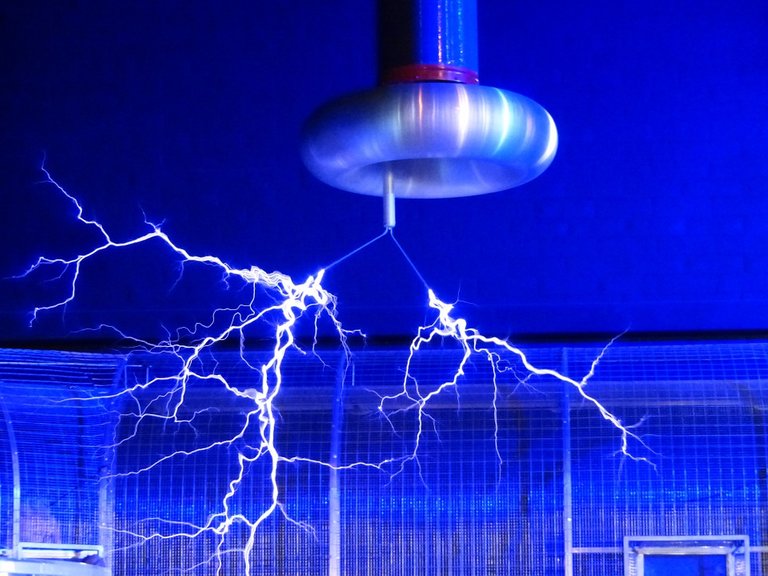.gif)
There are a number of places in the body that are relatively smaller than atmospheric (or negative) pressure. For example, when we breathe (breathing), the pressure inside our lungs must be smaller than the pressure of the outside air (atmosphere) so that air in our environment can flow into the lungs. When a person drinks water from a glass using a straw, the pressure inside his mouth must be much smaller than the atmospheric pressure around the glass so that the water in the glass can flow into the mouth.
Inside our body, the heart acts as a pump that can produce really high pressure (~ 100 to 140 mmHg) to produce a large thrust force to allow blood to be driven from the lungs to the entire body through the arteries. The blood that has been flowed throughout the body will be channeled back to the lungs through venous, therefore the pressure on the venous must be quite small enough that the blood (especially on the lower part of the body like the leg) can be sucked back into in the heart. Failure to suck back the blood that has been drained into the foot region often results in swelling of the veins (veins).
- Pressure inside the skull
The space around the brain inside the skull has about 150 cm3 of cerebrospinal fluid (CSF). This brain fluid can flow out of the brain region through the ventricle (venticle). Ventricles are very small cavities that connect the brain space to the spinal cord. Circulatory flow (circulates) CSF fluid through the ventricles from the brain space to the spinal cavity and vice versa occurs continuously. If the ventricles are blocked, CSF fluid will be trapped inside the brain space (skull) so that it will increase the internal pressure of the skull. Increased internal pressure of the skull, to an excessive extent will lead to an enlargement of the skull (the head grows abnormally). This abnormal head enlargement is referred to as hydrocephalus. This condition often occurs in infants, and becomes a very serious problem. However, if these symptoms can be known early, the mitigation can be done by surgery by bypassing a clogged CSF flow system with the existing technology.
Measurement of adding CSF pressure can not be done directly. The usual measurement method is to measure the length of the circumference of the head (skull) which lies just above the ear. The normal value of head circumference for infants is 32 to 37 cm. When this size is exceeded, then the baby has a tendency to attack hydrocephalus.
- Pressure on the Eyes
The clear fluid inside the eyeball contained between the surface of the eye and the retina has a certain pressure so that it can keep the eyeball at a fixed shape and size. Dimension or eye shape is critical. If the dimensions are not correct, the eye becomes unable to see. A change of 0.1 mm in diameter produces an effect (effect) on the clarity of vision. Never hit the eyeball too hard because it can be fatal where the internal pressure of the eye can not return the eyeball into its original shape and therefore can cause blindness. The normal pressure of the clear eye fluid (eye pressure) is at intervals of 12 to 23 mmHg.
The liquid in the front of the eye is composed mostly of water. The eye continuously produces fluid, and by its drainage system makes excess fluid disposable well. If the flow system is blocked so that circulation does not run properly, it will cause the pressure inside the eye to increase (increase). This increased pressure can limit the blood supply to the retina of the eye thus affecting the clarity of vision. This condition is called glaucoma. If conditions like this have been at a very severe level can cause blindness. The pressure produced by this eye fluid (eye pressure) can be measured by a device called a tonometer.
- Pressure On The Digestive System
The digestive system has an input door, through the mouth and into the junction between the esophagus and stomach (stomach-esophagus junction), and the anal sphincter exit. The length of the human digestive system from the mouth to the anus is approximately 6 m. The digestive system is equipped with valves that act as an opening and closing so that the digestive system proceeds perfectly. The tubes in the intestine play a role in leveling the distribution of (food) in it. The tubes are present between the stomach and small intestine (pylorus, which plays a role in avoiding the flow of food from the small intestine back into the stomach) and between the small intestine and large intestine (valve between small and large intestine). In some instances reverse channel flow may occur, such as during vomiting, the flow of food reverses from the normal. The pressure in the stomach and intestines (parts of the digestive system) is greater than the atmospheric pressure. Eaten foods (after satiety) increase the pressure on the digestive system. This pressure increase is marked by the tension of the abdominal skin.
In addition, when eating is usually the air that had been inhaled through the breathing is stuck and trapped in the body. This trapped air adds significant pressure to the digestive system. The pressure in the digestive system can also be generated by the gases produced by the bacteria present in the gut. These gases are generally issued in the form of flatus. Sometimes a form of blockage occurs in the tube between the large intestine and the small intestine and generates excessive pressure thereby blocking the blood vessel organs in the abdomen to draw blood to the vital organs inside. If this pressure becomes large enough will stop the mechanism of blood flow system in the stomach that can result in death. An intubation technique (inserting a small pipe through the nose, stomach and intestines) is usually done to reduce the pressure. If this attempt fails, then resolved by surgery. The addition of substantial pressure in the intestine will cause the risk of infection in the intestinal wall, because of the great pressure will cause the intestinal wall tends to tear or cracks like a small wound cut, and the gases trapped in the intestine will quickly spread and enter the wound - the cut. This risk can be reduced by surgery in high-pressure rooms, where the pressure of the room is higher than the intestinal pressure of the patient.
- Pressure inside the bladder
One of the most important internal pressures of the body is the pressure on the bladder. The increase in pressure that occurs in the bladder is due to the accumulation (continued increase) volume of urine (urine). For adults the maximum volume of the bladder is 500 ml with an average pressure of 30 cmH2O. If contraction of the bladder wall occurs, this pressure can be increased up to 150 cmH2O. Boys sometimes use the classical way to measure how much bladder pressure is by vertically pissing toward a wall and measuring the maximum height of bursts achieved. For people with prostatic (bladder blocked channel), bladder pressure can reach more 100 cmH2O.
Pressure inside the bladder can be measured by inserting a catheter equipped with pressure sensor into the bladder through the urethra (urinary outlet). The pressure on the bladder may increase as it coughs, while sitting and when in a state of tension. Especially for pregnant women, the pressure on the bladder will increase with the weight of the embryo and usually therefore urinate frequently. In stressful situations can also increase the pressure on the bladder, studying when the exam makes you urinate frequently to the toilet. This is due to "nerves".
thanks for reading, here are some of my previous post :
thanks for reading, here are some of my previous post :
https://steemit.com/air-clinic/@najma/some-simple-habits-that-are-beneficial-to-health






